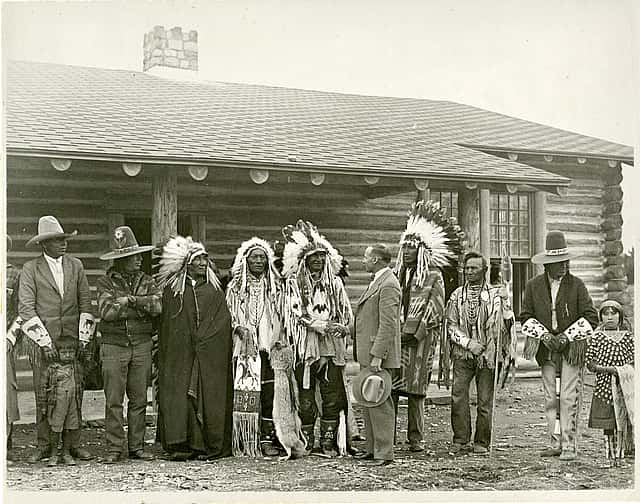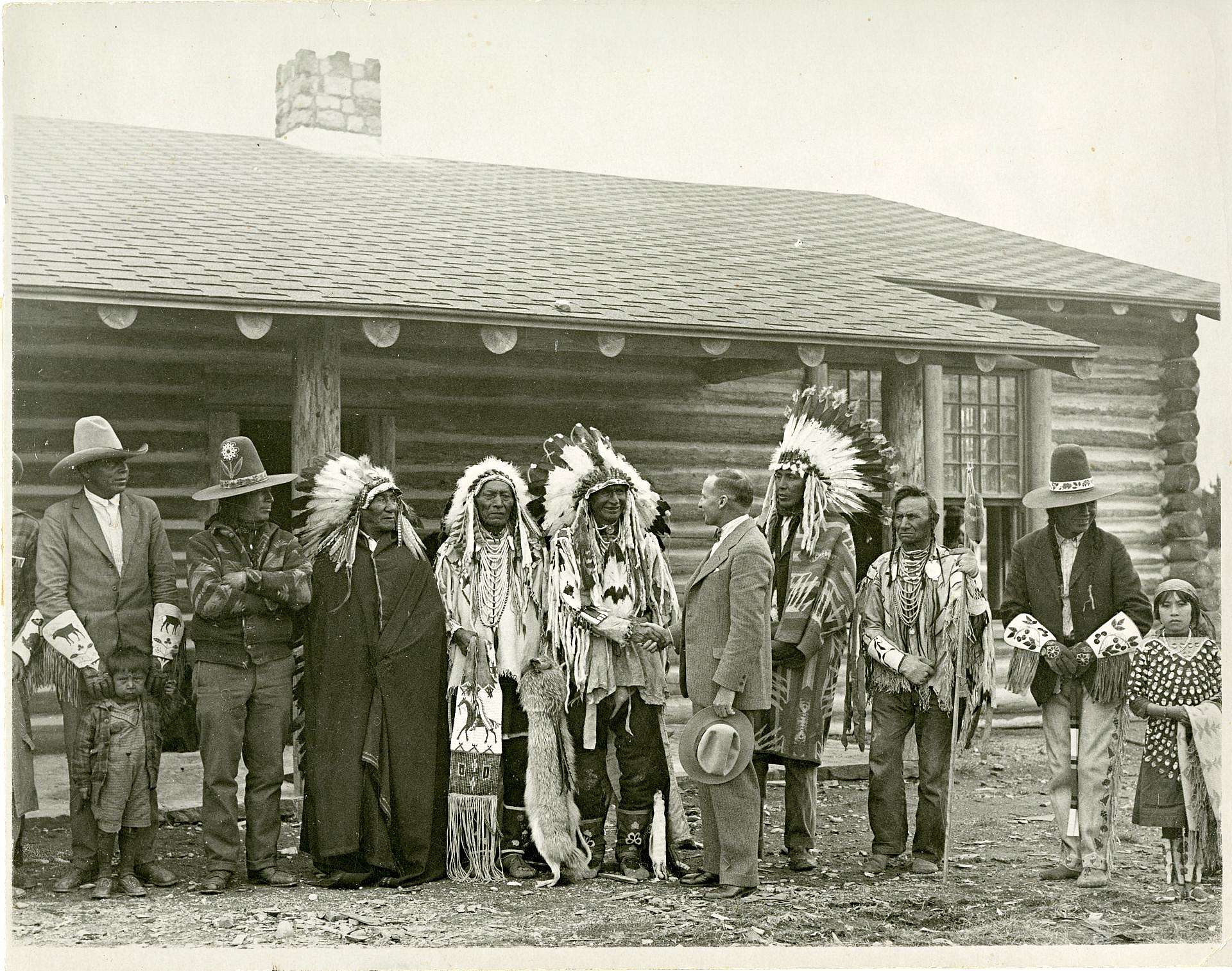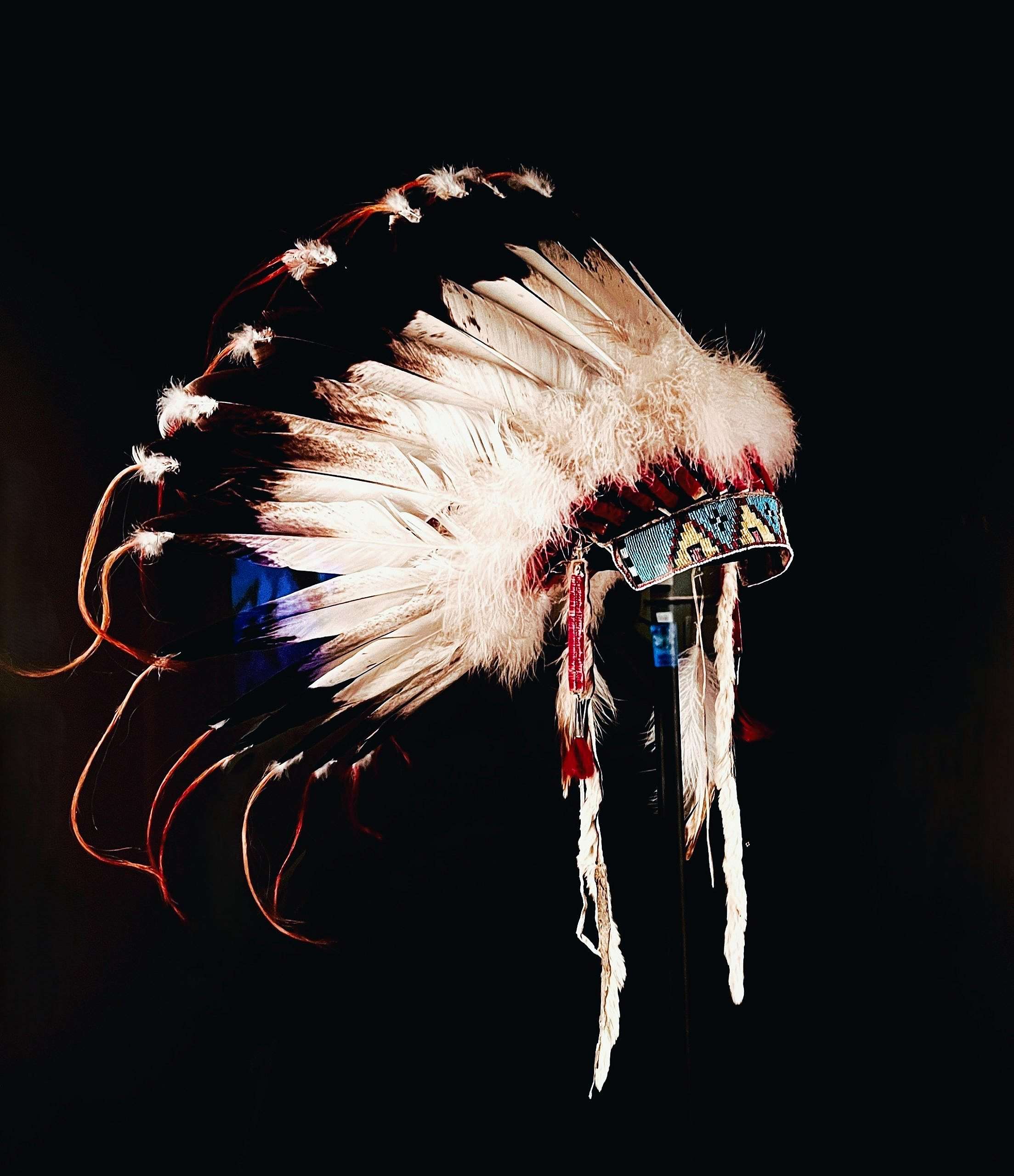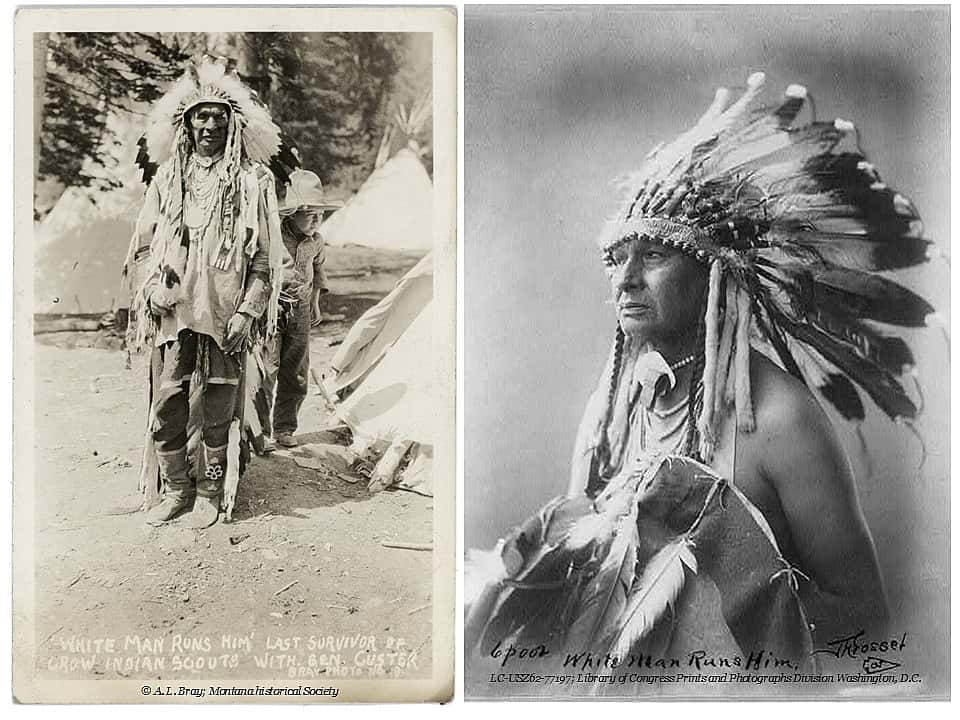
Scout, Warrior, Witness: The Legacy of White Man Runs Him

A Feathered Legacy
On display in the Plains Indian Museum visitors will find a feather bonnet that once belonged to a revered Crow Indian scout named White Man Runs Him. More than just an artifact; its symbolism runs deep, reflecting courage and leadership, but also the complex, tenuous alliances between the Crow Nation and the U.S. Army during this critical period in American history.
The Making of a Crow Warrior
Born in 1858 in the Bighorn Mountains of Montana before it became a U.S. territory, White Man Runs Him belonged to the Big Lodge Clan of the Crow Nation in Lodge Grass, often called the Valley of the Chiefs for the many Crow leaders who made it their home. In White-Man-Runs-Him authors Dennis Harcey and Brian Croone (along with Joe Medicine Crow) explain that his name stems from a childhood incident where a white man chased him for stealing candy from his store. The name, not intended as an insult, served as a good-humored admonition to inspire better conduct. In Crow tradition, names often reflect the experiences or characteristics of a person; however, the Sioux and Cheyenne—historical enemies of the Crow—later used his name mockingly because of his role as a scout for the U.S. Army. Later, as a young warrior, White Man Runs Him became known for his brave and skillful horse-stealing raids on the Sioux, earning him respect among the Crow Nation.
Tension on the Plains
The Sioux and Cheyenne, in conflict with the Crow for decades, sought to expand into Crow hunting grounds, granted to the Crow by the 1851 Fort Laramie Treaty. The Sioux routinely ignored these boundaries, which often provoked skirmishes and battles between the tribes. The Crow decided that collaboration with the U.S. Army was in their best interest rather than a betrayal of their native identity, since the Sioux and Cheyenne proved formidable foes. To this end, in 1876 White Man Runs him and others (Curly, Goes Ahead, Hairy Moccasin, etc.) enlisted as scouts in the U.S. Army under General George Armstrong Custer’s leadership of the 7th Cavalry.
Scouting the Shadows
As a scout, White Man Runs Him proved instrumental at the Battle of Little Bighorn, first locating the Sioux and Cheyenne encampments from a high vantage point called the Crow’s Nest. Custer based his fateful decision to engage in battle on this information. White Man Runs Him and the other Crow scouts intended to follow Custer into battle at Little Bighorn; however, chief scout Mitch Boyer directed them to rejoin the pack train, so they never engaged in combat. Other more dramatic and perhaps apocryphal accounts suggest that the Crow scouts foresaw imminent defeat in light of the overwhelming Sioux and Cheyenne armies, so they replaced their Army uniforms with traditional Crow garb. Because of this, Custer allegedly dismissed them from service moments before the fatal battle.
A Quiet Life
After the Battle at Little Bighorn, White Man Runs Him settled on the Crow Reservation where he lived a peaceful and quiet existence engaging in family and community life. He gained recognition as one of the survivors of that infamous Battle at Little Bighorn where his historical significance as a key eyewitness and scout aided historians in reconstructing the events of that fateful day. White Man Runs Him lies in eternal rest at the Custer National Cemetery, honoring his role as a scout.
About the Feather Bonnet
The Crow and other tribes reserved feather bonnets for male leaders who demonstrated courage, leadership, or spiritual importance within their warrior societies. The bonnets often featured golden eagle tail feathers attached to a buckskin or felt crown. Sometimes they featured bison horns, ermine pelts, or even beads. Among Native peoples, feather bonnets symbolized strength, bravery, and wisdom.


Written By
Jane Gilvary
Jane Gilvary is a Content Specialist in the Public Relations Department at the Center of the West. She writes and manages web content and serves as editor of the Center’s monthly e-newsletter, Western Wire. Outside of work, Jane enjoys exploring Wyoming’s backcountry and discovering its hidden treasures.
